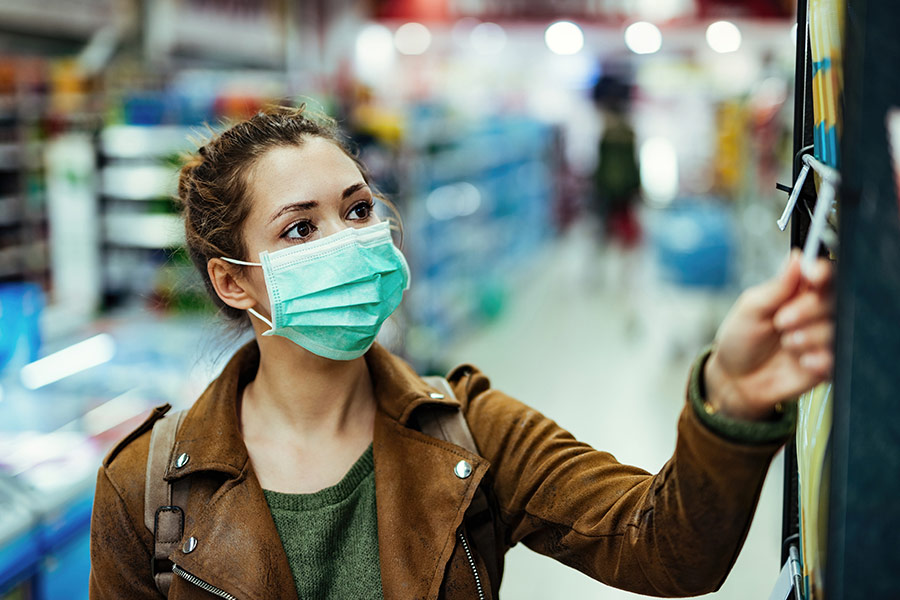COVID-19: Mask Myths Debunked
Many states, cities, and counties have begun to mandate the wearing of face coverings in public places, some even imposing large fines for those who don’t comply. Curiously, they have also become a controversial topic on social media, with misinformation running rampant regarding their safety and effectiveness.

Myth 1: Virus particles are too small for cloth masks to be effective in reducing transmission.
While virus particles are indeed small, one needs to understand how COVID-19 is spread to understand what makes cloth masks effective. According to the latest research, COVID-19 is primarily spread through respiratory droplets that come out of our mouth whenever we talk, cough, or sneeze. A recent study showed that hundreds of droplets were generated by merely saying a simple phrase, but that nearly all droplets were blocked when covering the mouth with a washcloth. By wearing a face covering when we go out, we protect others by limiting the amount of respiratory droplets we produce and significantly reduce the opportunity for transmission.
Myth 2: I don’t need to wear a mask if I don’t feel sick.
According to the latest science, most COVID-19 transmission is caused by those who are asymptomatic or presymptomatic, and some may never experience any symptoms at all. Since it’s impossible to know who is infected at any given time, this makes wearing a mask around others one of the best ways to ensure we don’t unknowingly spread the virus.
Myth 3: Wearing a mask will give me carbon dioxide poisoning.
Although too much carbon dioxide can be hazardous, there is little evidence that wearing a face covering will make you breathe enough carbon dioxide to cause illness in individuals who don’t already suffer from severe respiratory disease, especially if you’re wearing it for a short period of time, such as at the grocery store or doctor’s office. Because carbon dioxide molecules are able to diffuse through masks, normal respiration can still take place.
Looking Beyond The Research
While much research is being done regarding the effectiveness of masks, many real-world examples exist as well: In one instance, a man with COVID-19 symptoms flew from China to Toronto and tested positive shortly after. He had worn a mask on his flight and all 25 individuals closest to him on the flight tested negative for COVID-19. In another case, two hair stylists in Missouri had close contact with 140 individuals while sick with COVID-19. Everyone wore a mask and no clients tested positive.
We still have a lot to learn about coronavirus, but there is a growing body of evidence that masks may be key in curbing its spread. By taking this simple step, along with following social distancing guidelines, all of us can do our part in preventing the spread of COVID-19.